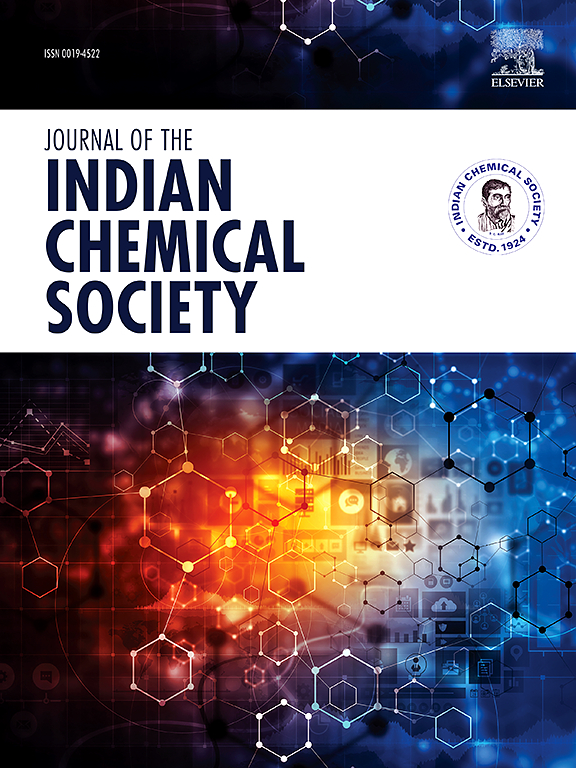Sensitive and highly selective nanozymatic cysteine determination over glutathione utilizing tri-nucleus Cr0.3Mn0.7Fe2O4 ferrite nanoparticles as high throughput peroxidase mimetic nanomaterials
IF 3.2
4区 化学
Q2 CHEMISTRY, MULTIDISCIPLINARY
引用次数: 0
Abstract
A novel highly sensitive nanozyme-based colorimetric sensor was developed for selective cysteine quantification in biological samples using tri-nucleus Cr0.3Mn0.7Fe2O4 ferrite nanoparticles. The as-synthesized Cr0.3Mn0.7Fe2O4 nanoparticles revealed a high peroxidase-like activity toward oxidation of OPD resulting in a significant absorbance at 448.0 nm, however, the absorbance was selectively inhibited by introducing cysteine molecules in reaction media, which was used as a basis for constructing a highly sensitive nanosensor toward cysteine detection. At optimal conditions, a linear working range of 6.0 μg/L-20.0 mg/L and a limit of detection as low as 4.0 μg/L were provided for cysteine detection. The repeatability studies revealed a %RSD of about 7 %, showing very good repeatability of the developed method. The selectivity studies showed that even glutathione cannot affect the analytical response of the presented sensor even with 15.0-fold higher concentrations than cysteine, revealing ultra-selective detection of cysteine using the developed process as a characteristic advantage of the presented method compared of the reported ones. Finally, the developed sensor was successfully utilized for the analysis of cysteine content of human blood serum. Based on the results of this work, the developed nanosensor can be utilized for accurate, sensitive, and selective cysteine quantification in bio-samples.

求助全文
约1分钟内获得全文
求助全文
来源期刊
CiteScore
3.50
自引率
7.70%
发文量
492
审稿时长
3-8 weeks
期刊介绍:
The Journal of the Indian Chemical Society publishes original, fundamental, theorical, experimental research work of highest quality in all areas of chemistry, biochemistry, medicinal chemistry, electrochemistry, agrochemistry, chemical engineering and technology, food chemistry, environmental chemistry, etc.

 求助内容:
求助内容: 应助结果提醒方式:
应助结果提醒方式:


